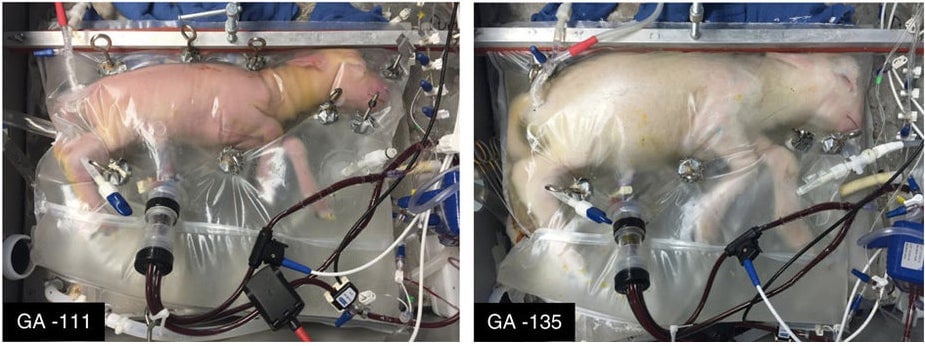Scientists built an external womb to help premature infants survive. But first, they tested it on baby lambs
For expecting parents, 24 weeks is an important milestone. It’s a little more than halfway through pregnancy, and it’s at this age that the fetus has at least a fighting chance of surviving outside its mother’s body. The odds of survival aren’t great—only about half of babies birthed at this age survive—but it’s possible.


For expecting parents, 24 weeks is an important milestone. It’s a little more than halfway through pregnancy, and it’s at this age that the fetus has at least a fighting chance of surviving outside its mother’s body. The odds of survival aren’t great—only about half of babies birthed at this age survive—but it’s possible.
Babies younger than that haven’t had time to develop lungs; they still rely on the umbilical cord to deliver oxygenated blood from their mothers. If a child is born before 24 weeks, it’s survival rate sharply declines to 25% (paywall), and even then, only if it has the best medical care; usually babies born at this age have major health complications, too.
But, if you could find a way to replicate the womb outside the mother, perhaps extremely premature babies would have a better shot at a healthy childhood.
On April 25, researchers from the Children’s Hospital of Philadelphia showed that they had developed a way to keep premature lambs born between 15 and 19 weeks—roughly equivalent to 22 to 23 weeks in humans—alive in an external, plastic womb call a Biobag. In eight out of 23 cases, lambs survived through “birth,” when they were removed from the bags between three and four weeks later. (In this study, most of the lambs were euthanized shortly after they were taken out of the Biobags so researchers could study the development of their internal organs; some were kept alive for a different study.)

The Biobag nourishes a growing fetus a lot like a uterus would. It’s filled with amniotic fluid, and connected to a flow of oxygenated blood, just like the umbilical cord would ordinarily provide. It expands as its inhabitant grows, and it keeps temperature and pressure stable. By the time the lambs were taken out of the bags, their lung function had “essentially caught up to that of a mature infant,” Emily Partridge, a research fellow at Children’s Hospital of Philadelphia and co-author of the paper, told MIT Technology Review.
Although human development doesn’t quite follow lamb development (our brains are also much less formed than those of lambs at a comparable time of gestation), Alan Flake, the director of the Philadelphia hospital’s Children’s Institute for Surgical Science, told the Technology Review he’s confident that these devices will be available for testing neonatal intensive-care units in as little as three years.
Biobags aren’t intended to replace the womb entirely. Human gestation is too complicated to recreate in the lab. Instead, they’re designed to help preterm babies develop normally if their mother’s can’t carry them for a full pregnancy.